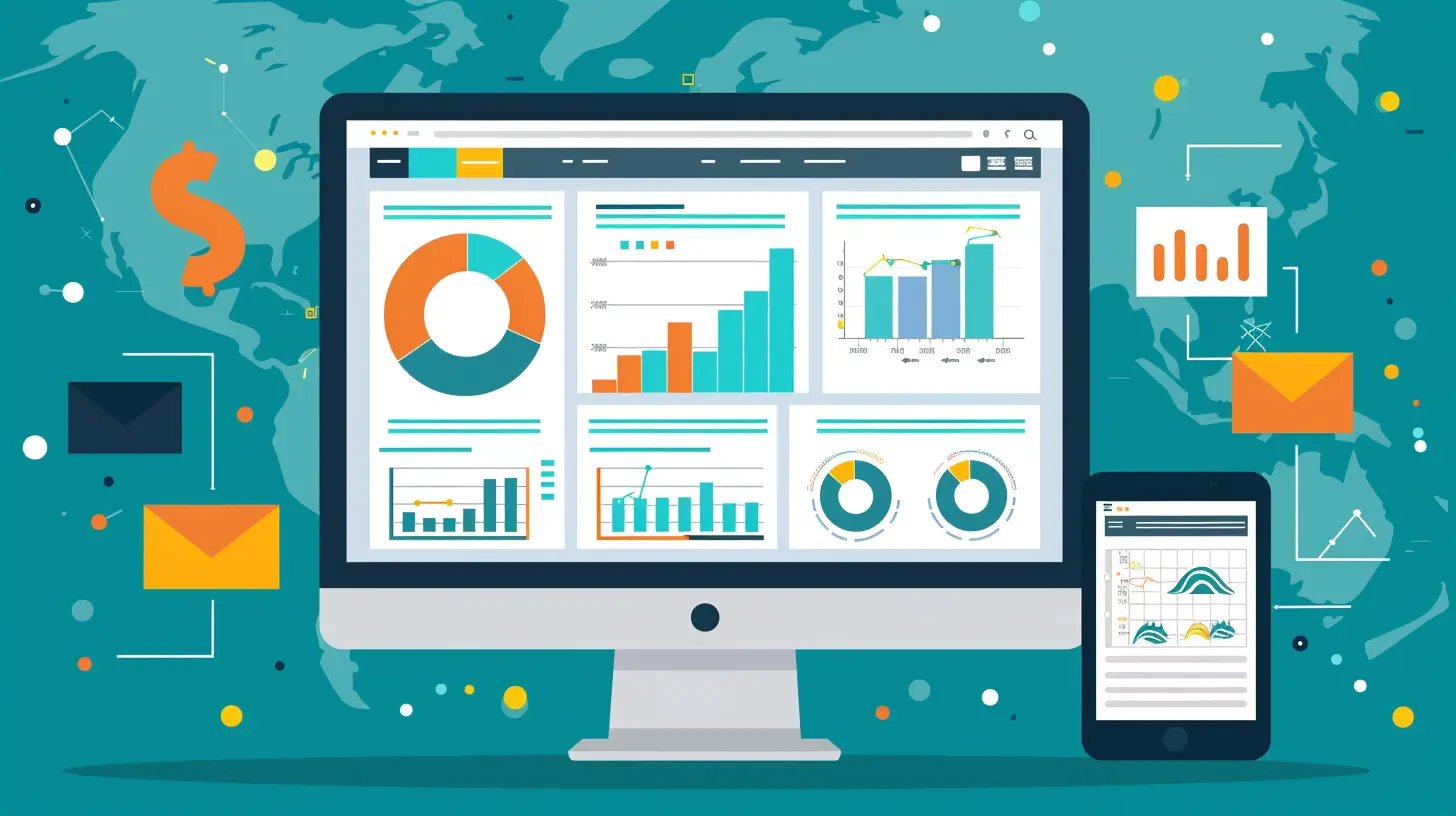Data Analytics in the Cloud: What You Need to Know
27 October 2025
In a world where data is the new oil, knowing how to refine and use it effectively can make or break a business. And when it comes to handling massive amounts of data, doing it the old-school, on-premise way is like trying to fit an elephant into a Mini Cooper — it just doesn’t work anymore. That’s where cloud-based data analytics swoops in like a superhero. But what exactly is it? How does it work? And should you be using it?
Let’s break it down in human speak. No tech mumbo jumbo, just real talk.
What Is Data Analytics in the Cloud?
First things first — let’s answer the big question.Data analytics in the cloud refers to the use of cloud computing platforms (think AWS, Google Cloud, Microsoft Azure, etc.) to perform data analysis tasks. These platforms give you the tools to collect, store, manage, and analyze data — all without needing to own or maintain physical servers.
In simple terms? It’s like having a giant, super-smart calculator up in the sky that crunches your data for you. And the best part? You only pay for what you use.
Why Businesses Are Moving to Cloud Analytics
So, why is everyone jumping on the cloud analytics bandwagon? Is it just a fad? Nope. It actually makes a lot of business sense.1. Scalability That Grows With You
Imagine your startup is growing fast. One week, you’re analyzing data from 100 customers. Next week, it’s 10,000. With cloud analytics, scaling up isn’t a headache. You can increase your computing power just like upgrading your Netflix plan.2. Cost-Effective (No, Really)
You don’t have to buy expensive servers or hire a team to babysit them. Cloud providers handle all that techy backend stuff. You just plug in your data and go.3. Real-Time Insights
How cool would it be to know exactly what your customers are doing, while they’re doing it? Cloud analytics makes that possible. You get real-time dashboards and reports to make quick, smart decisions.4. Accessibility and Collaboration
Your team is spread across five time zones? No problem. With cloud analytics, anyone can access the data they need, anytime, from anywhere. It’s data democracy at its finest.
Core Components of Cloud Data Analytics
Alright, let’s peel back the curtain. What makes cloud analytics tick?1. Data Sources
This is where it all begins. Your data can come from:- Websites
- Mobile apps
- CRM systems
- IoT devices
- Social media
- And pretty much any digital corner of your business
2. Data Storage
Once collected, the data needs a home. Cloud storage solutions like Amazon S3 or Google Cloud Storage are like digital warehouses. Safe, scalable, and always open.3. Data Processing
Here’s where the magic happens. Platforms use tools like Apache Spark, BigQuery, or Snowflake to process and clean your data so it’s ready for analysis.4. Data Analysis Tools
Now to the juicy part — the analysis. Tools like Power BI, Tableau, or Looker help you visualize trends, discover patterns, and get insights that actually mean something.
Popular Cloud Data Analytics Platforms
We’ve mentioned a few names already, but let’s dive into the big players doing all the heavy lifting in the cloud analytics space.1. Amazon Web Services (AWS)
With services like Redshift, Athena, and QuickSight, AWS is a powerhouse. It’s flexible and comes with tons of integrations — a great pick if you’ve got complex analytics needs.2. Google Cloud Platform (GCP)
Known for BigQuery, GCP is the go-to for businesses that love speed and simplicity. It’s big on AI and machine learning, too.3. Microsoft Azure
Azure Synapse Analytics combines big data and data warehousing. It plays nice with Power BI and Microsoft’s whole ecosystem, making it perfect for enterprises already using Microsoft tools.4. Snowflake
Designed purely for cloud, Snowflake separates storage and compute — which is a fancy way of saying it’s efficient and fast. It’s also super user-friendly.Pros and Cons of Cloud Data Analytics
Let’s be real — no system is perfect. Cloud analytics has a ton of perks, but it’s not all sunshine and rainbows.✅ Pros
- Flexibility: Scale up or down as needed.- Lower Costs: Pay for what you use — nothing more.
- Fast Deployment: Spin up a data warehouse in minutes, not months.
- Automatic Updates: Stay current without lifting a finger.
- Better Collaboration: Share insights across teams easily.
❌ Cons
- Internet Dependency: No internet = no access.- Data Security Concerns: Handing data to a third-party always carries risks.
- Compliance Hurdles: Not all industries can freely move data to the cloud.
- Vendor Lock-In: Switching platforms can be a headache.
So, is it worth it? If you like speed, savings, and the ability to outsmart your competitors — probably yes. But tread carefully and make sure it fits your unique business needs.
Navigating Data Security and Compliance
Whenever you’re dealing with sensitive data, there’s a big, blinking neon sign that says “SECURITY.” Cloud providers know this. That’s why many offer encryption, Identity and Access Management (IAM), and threat detection services out of the box.But here’s the thing — at the end of the day, it’s a shared responsibility. The provider secures the platform. You’re responsible for how you use it.
If you’re in healthcare, finance, or any regulated industry, make sure your provider is compliant with laws like:
- HIPAA
- GDPR
- SOC 2
- CCPA
Pro tip: Always read the fine print and double-check where your data is stored.
Real-World Uses of Cloud Data Analytics
Still wondering how data analytics in the cloud actually helps in real life? Let’s paint a picture.Retail
Retailers use cloud analytics to predict shopping trends. They can stock inventory based on real-time demand, optimize pricing, and personalize marketing.Healthcare
Hospitals use it to analyze patient records, track disease outbreaks, and improve treatment plans — all while staying HIPAA-compliant.Manufacturing
Manufacturers monitor machinery in real time using IoT. Predictive maintenance saves money and prevents unexpected breakdowns.Marketing
Marketers analyze campaign performance in real time. They track engagement, bounce rates, and conversion funnels to tweak campaigns on the fly.Tips to Successfully Implement Cloud Data Analytics
Ready to jump in? Hold up — let’s do it the smart way.1. Start Small
Don’t go all-in on Day 1. Pick one use case or department to start with. Learn, iterate, scale.2. Choose the Right Platform
AWS isn’t one-size-fits-all. Same goes for Google or Azure. Evaluate based on cost, features, and support.3. Upskill Your Team
Don’t leave your team in the dark. Offer training to get everyone comfortable with the new tools.4. Set Clear Goals
Are you trying to cut costs, boost sales, improve customer experience? Define your KPIs before diving into the data pool.5. Prioritize Security
Use encryption, secure access, and always, always have a data backup.The Future of Cloud Data Analytics
Let’s peer into the crystal ball for a second. What’s next?- AI & ML Integration: More advanced, predictive insights at lightning speed.
- Edge Analytics: Data analysis closer to where it’s generated (like in smart devices).
- Data-as-a-Service (DaaS): Plug-and-play data services on-demand.
- Privacy-First Designs: Smarter ways to protect privacy without losing insights.
Cloud analytics isn’t just a trend — it’s shaping the future of how businesses understand and serve their customers.
Final Thoughts
Here’s the bottom line: if your business is swimming in data but still making decisions based on gut feel — it’s time for a change. Cloud data analytics gives you the power to turn raw data into real insights, without the hassle of managing complex infrastructure.Sure, it's not perfect. You'll have to deal with things like security and compliance. But the benefits? They’re massive.
So, is cloud data analytics right for you? Probably. Just approach it strategically, and you’ll be analyzing, optimizing, and monetizing your data like a pro in no time.
all images in this post were generated using AI tools
Category:
Data AnalyticsAuthor:

Gabriel Sullivan
Discussion
rate this article
1 comments
Zephyrion Pope
Exciting insights! I'm curious how cloud data analytics will evolve and transform decision-making processes.
November 1, 2025 at 4:53 AM

Gabriel Sullivan
Thank you! Cloud data analytics is set to enhance decision-making by enabling real-time insights and improving collaboration across teams. Stay tuned for future developments!
